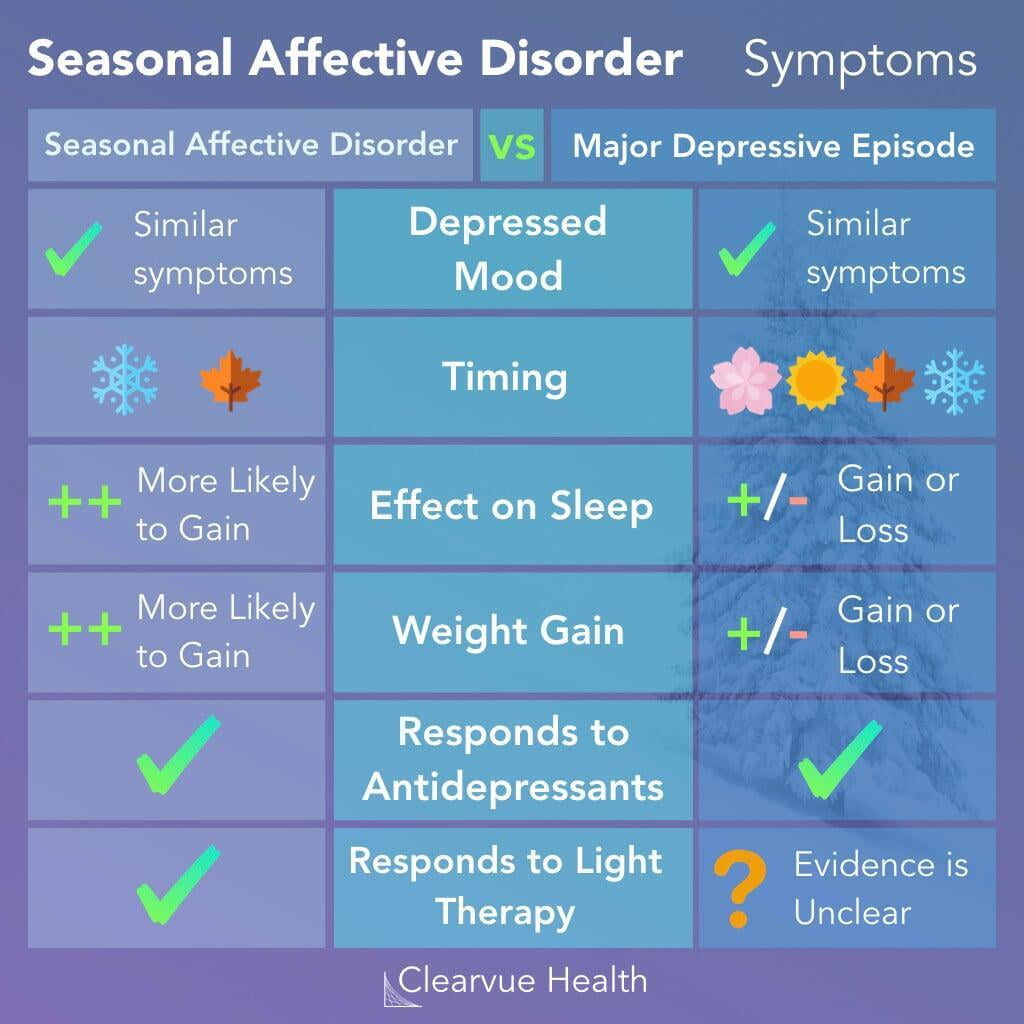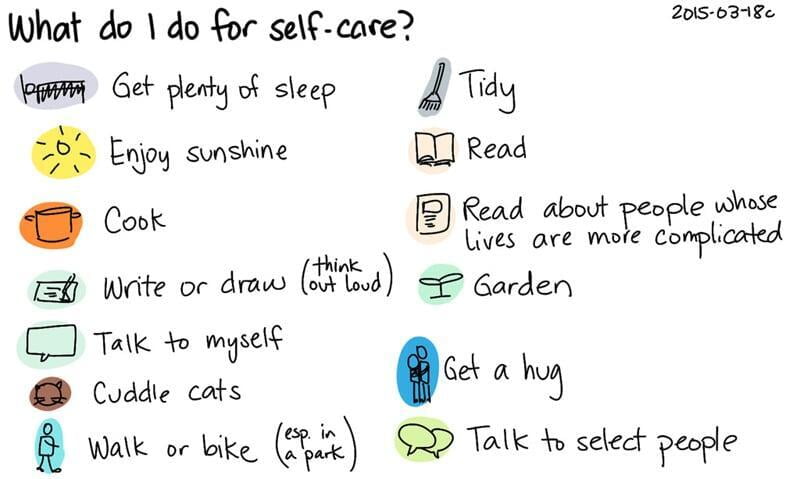Seasonal Affective Disorder: What is it and How to Cope
Author: Tegan Hargreaves
Seasonal affective disorder (SAD) affects up to 5% of individuals and is defined as “a mood disorder that is … characterized by depressive symptoms that occur at a specific time of year with full remission at other times of year” (1). Many people with SAD experience this cyclical pattern in the fall and winter months, which is consistent with decreased vitamin D and daylight; however, some people with SAD will experience this pattern during the spring and summer.

While SAD affects everyone differently, common symptoms are consistent with those of a major depressive episode. In general, the signs and symptoms of SAD can include feelings of sadness most of the day nearly every day, hopelessness, loss of interest in activities, low energy and oversleeping, weight gain, overeating, craving carbohydrates, concentration difficulties, and even suicidal thoughts.
Treating SAD can at times require intervention by medical professionals. However, if you are noticing symptoms of SAD in yourself, there are many things you can do from home that are safe and highly effective.

One of the simplest things you can do is to ensure that you are engaging in self-care.
When I refer to self-care, I’m not referring to the sensationalized or “social media version” of self-care, but simpler things that are required to be healthy and well. Self-care can look different to everyone and depends on what you need at the time. For me, sometimes self-care looks like using sheet masks and painting my nails; other times, self-care is forcing myself to do the bare minimum, like brushing my teeth, changing out of my pajamas, and eating consistent meals. Another important thing to do to encourage self-care is to ensure you are getting adequate sleep. SAD is often accompanied by inconsistent sleep cycles and delayed onset of sleep, which substantially disrupt natural circadian rhythms (2). Ensuring that you are going to bed and waking at approximately the same time daily can also aid in regulating your circadian rhythm and improving symptoms associated with SAD.
Another important element of self-care that everyone can benefit from, especially those struggling with SAD, is getting daily exercise, outdoor time, or both. Pairing exercise and light therapy have been found to dramatically improve symptoms of SAD in clinical studies (3). One of the hypothesized etiologies behind SAD is a lack of vitamin D, which helps explain why Canadians and those in the Northern Hemisphere are often affected. By ensuring that you are getting outside to stimulate your body to synthesize the active form of vitamin D is essential to wellness. If this isn’t possible for you, taking vitamin D supplements (1000-2000 IU daily is effective and well-tolerated) may be helpful in improving SAD symptoms (4).

Consistent with vitamin D supplements, light therapy is another highly recommended treatment for SAD. Light therapy is intended to mimic the sun and helps provide an external source of vitamin D, as well as helps to regulate the circadian rhythm. Light therapy is highly effective in relieving SAD symptoms and is often recommended as the first line of treatment. Recently, light therapy has become much more accessible to the general public as they have become less costly and don’t require a prescription. Indeed, you can purchase effective lights on Amazon; Walmart; Bed, Bath, and Beyond; and even Canadian Tire.
Some things to look for when purchasing a light are that it offers approximately 10,000 lux of light and produces limited UV light. Using a light therapy lamp is largely straightforward; however, there are specific recommendations on maximizing the effects of a lamp: using within the first 1 hour of waking in the morning for approximately (within the first ten minutes is best), for at least 30 minutes at an appropriate distance (16-24 inches, depending on specific model instructions), and not looking directly at the light. Personally, my light therapy lamp sits on my desk, and I use it for 25 minutes as I’m getting my day started and drinking my coffee.
Through a brief search on Amazon, I found these light therapy lamps that would meet the therapeutic criteria for SAD:
Most importantly, when struggling with SAD, it is critical that you speak to your doctor. While there are many things you can do to alleviate mild symptoms of feelings of “down in the dumps”, if your feelings/thoughts/behaviours become unmanageable, making an appointment with your general practitioner is very important. Your doctor may assess your vitamin levels, and things like thyroid hormones or iron. It is important to decipher the cause of the symptoms you are experiencing. Moreover, they will be able to provide prescriptions for medications such as SSRIs or SNRIs and give you referrals or suggestions for counseling/psychotherapy. Psychotherapy is an important tool for mental well-being and is something everyone should try at least once, especially when struggling with low moods. Part of our health insurance package as graduate students includes coverage for therapy services, as well as several sessions through one of the preferred network professionals.
If you are struggling with SAD and are unsure how to start feeling better, the Student Wellness Centre at McMaster may be a good place to start to get more information or find a support group. They offer many groups and sessions that are drop-in and preregistered, as well as virtual and in-person. CMHA Hamilton also offers several free or low-cost services to help promote mental health and well-being. Finally, if you feel like you are in a crisis situation, please contact 911 or go to your closest ER for immediate support.
With every new day comes new strength and new thoughts. – Eleanor Roosevelt